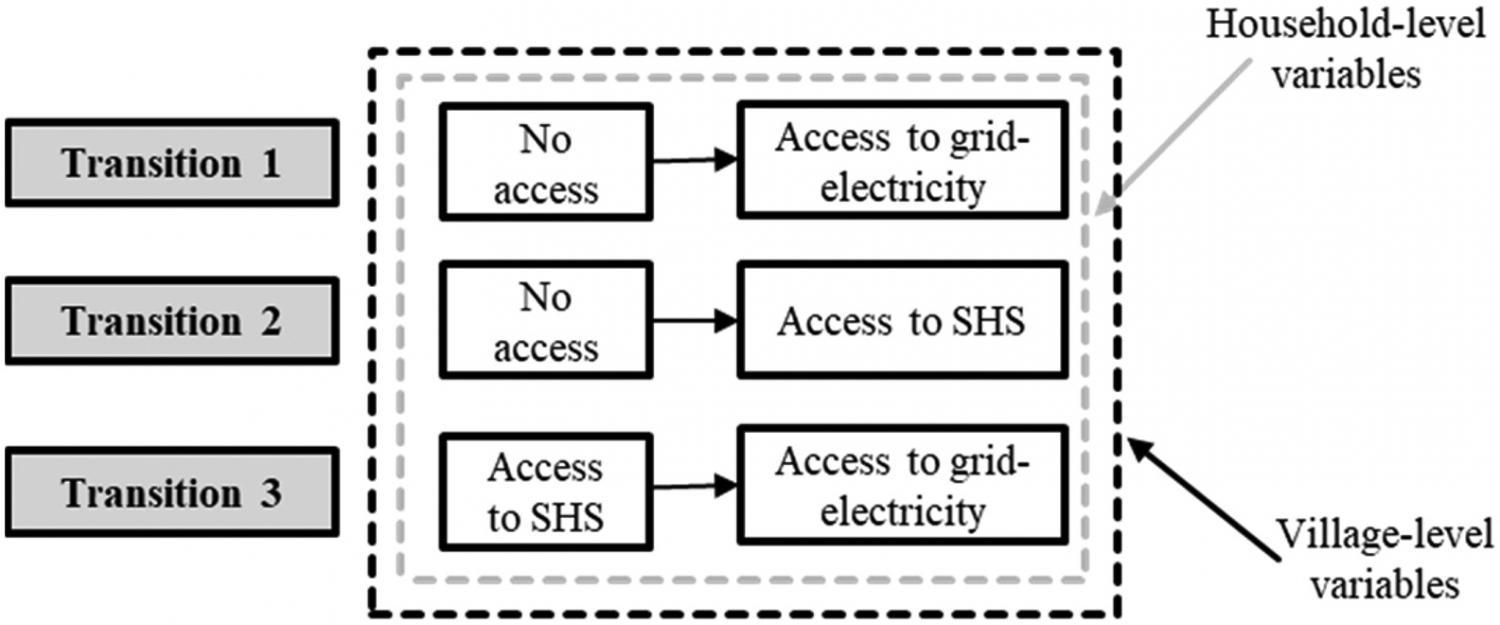
This paper presents an analysis of the path towards a clean energy transition in rural areas, from the time that households do not have electricity access from any source, to when they get access to the national electricity; considering the intermediate access to an off-grid renewable technology, as well as the post-electrification years. For this, field household-level data are collected through surveys and electricity consumption measurements in rural Kenya. Potential electricity access transitions were analyzed, in which the determinants of grid-electricity and solar home system (SHS) adoption were identified, finding that factors such as peer-pressure, good quality housing materials, and a male as household head will increase the probabilities to up to 45% for grid-electricity adoption. Increasing the electricity price and the unreliability of the electricity service will have a negative effect on these probabilities, reducing them at rates from 5 to 22%. Households that had access to a SHS before getting grid-electricity connection are likely to consume 9 kWh/month (equivalent to 142KSh/month) more than those that did not have access to it. Results also show that women as decision-makers have a key role in the energy transition, as female-headed households are keener to move to cleaner fuels at an early stage. The post-electrification consumption peak is likely to occur until the third year of connection, as households acquire more power-consuming appliances; however, this is greatly affected by the electricity grid unreliability. These findings intend to fill in the knowledge gap on understanding each step of the energy ladder in rural areas, which can potentially support the design of energy access interventions and policy strategies.
